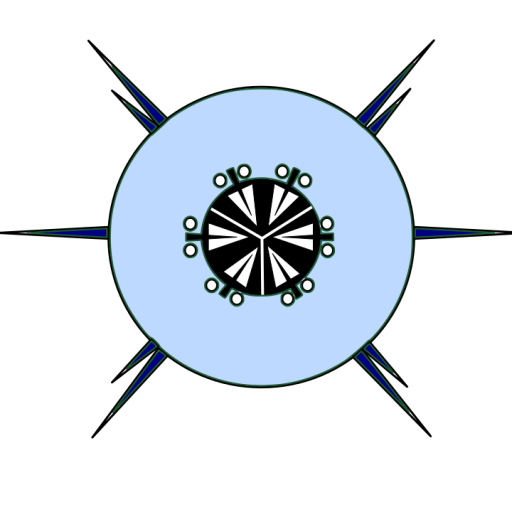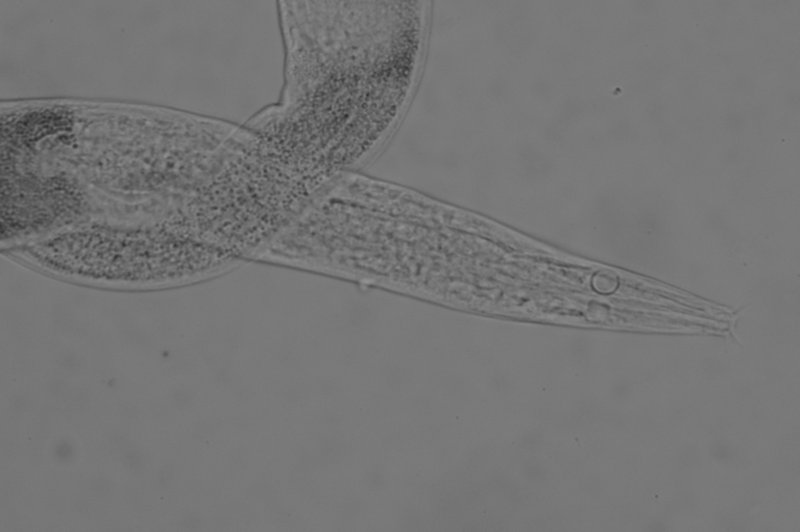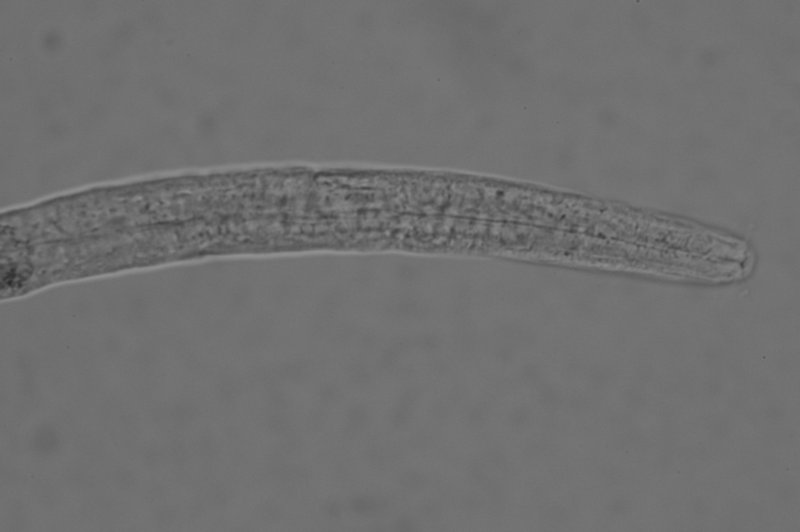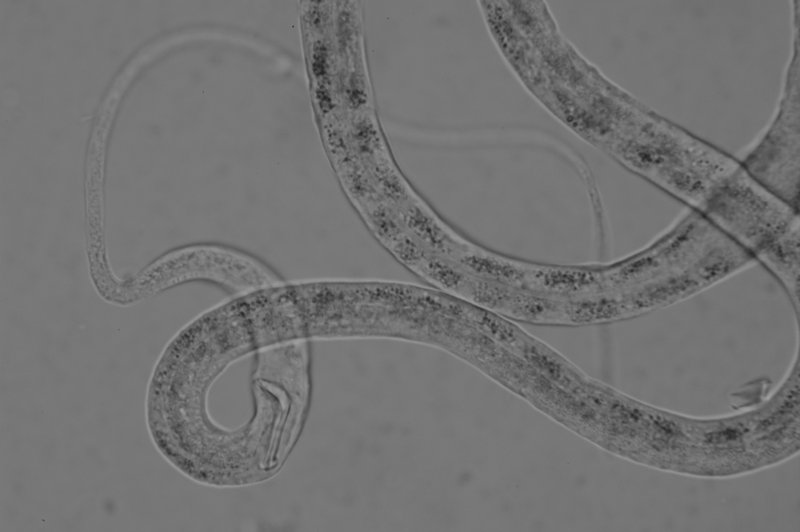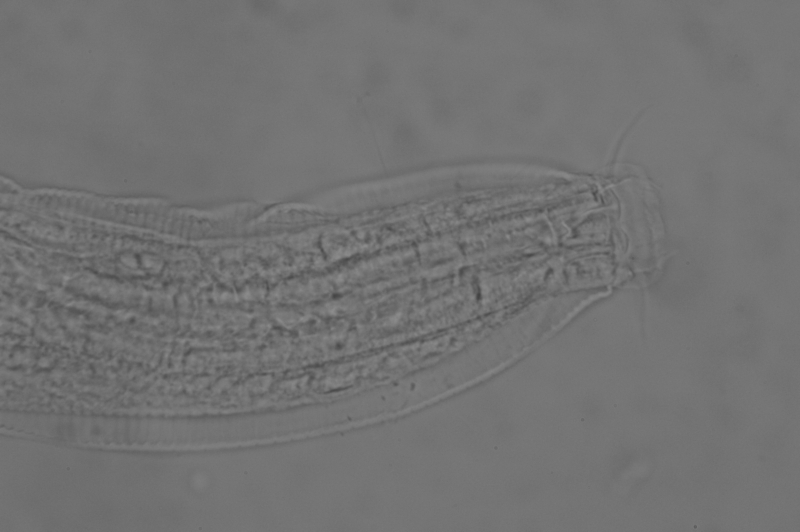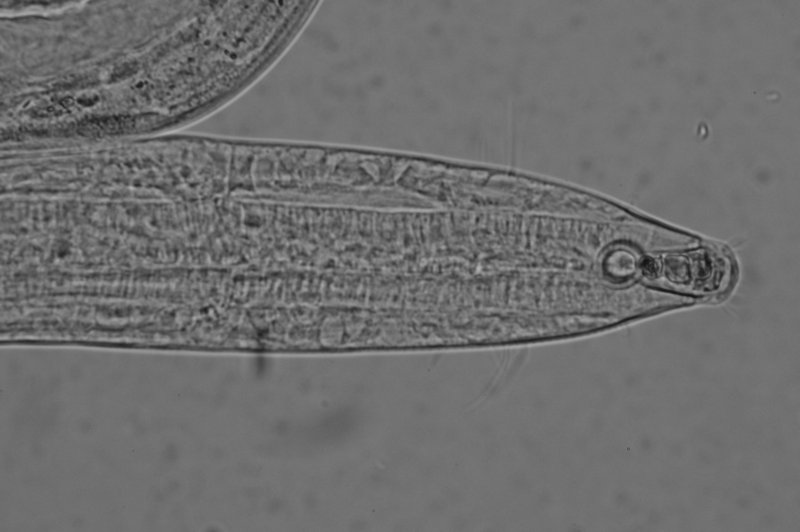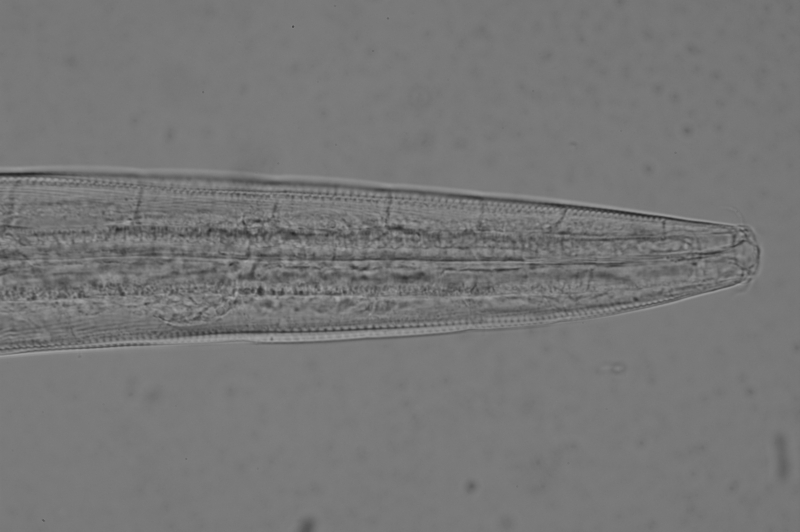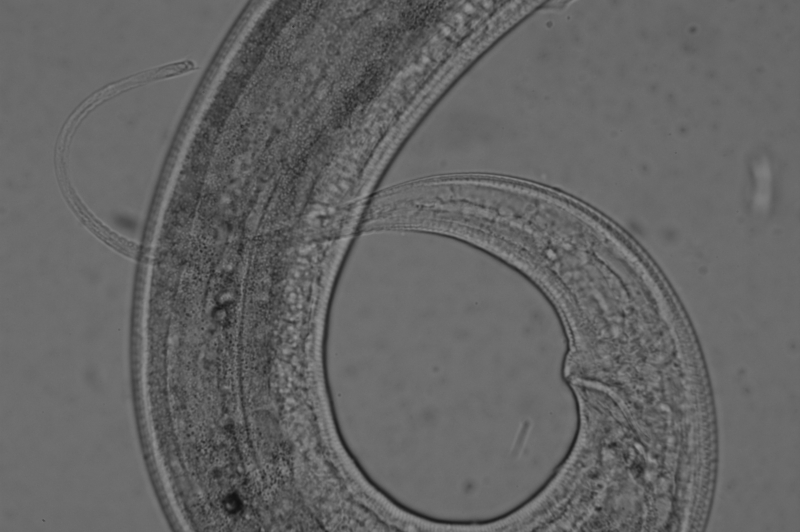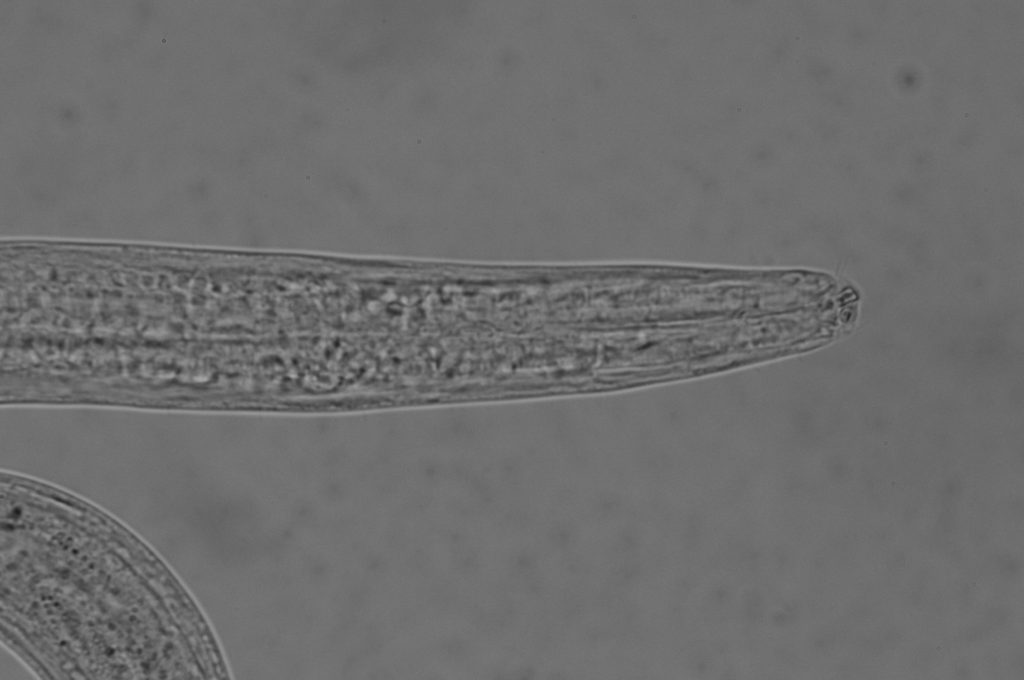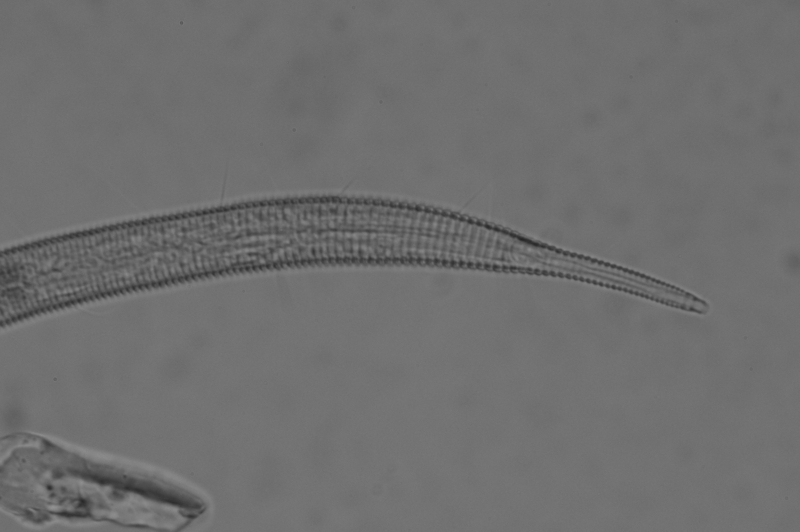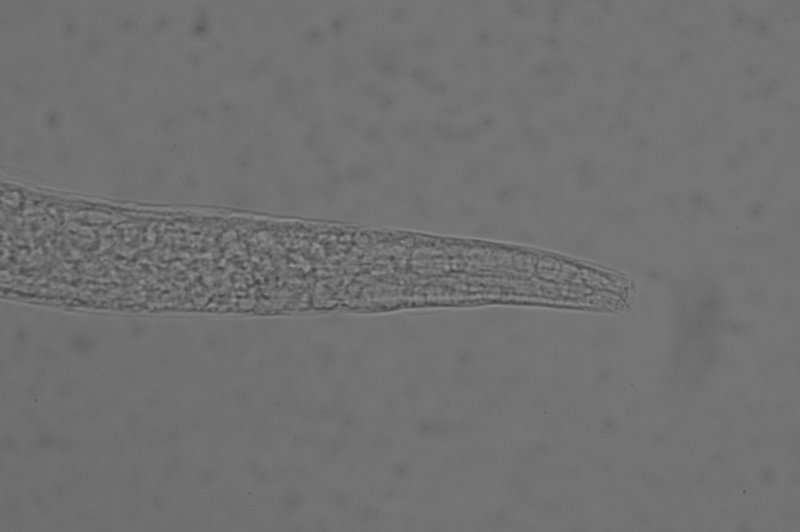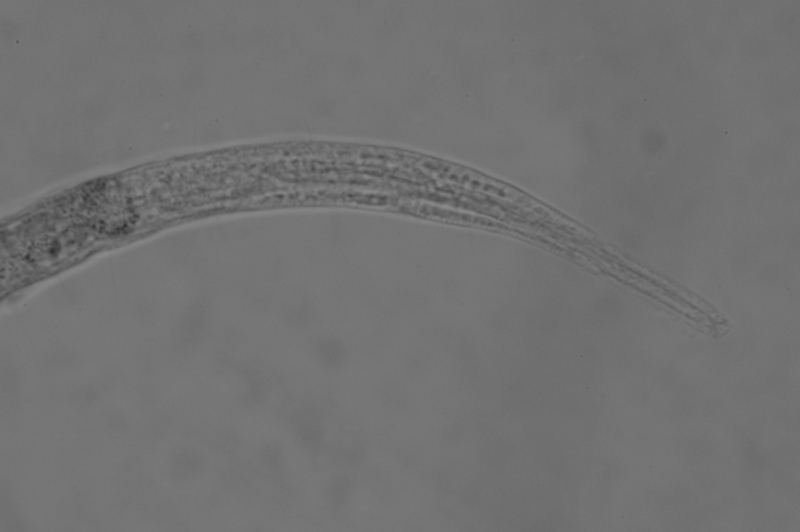This individual was collected at CIMAR24 station Polygon 1B at a depth of 1917 m on the slope of the continental shelf, Los Lagos region. I am placing this female specimen in the genera Cobbia. The cephalic setae are prominent and in a single circle, the amphids are round and set well back, 3-4 head diameters from the anterior end, the tail is long filiform.
This individual was collected at CIMAR24 station Polygon 2B at a depth of 1020 m on the slope of the continental shelf, Los Lagos region. This specimen is male and has a very long filiform tail ending in a pair of setae.
Daptonema clavicaudatum
This individual was collected at Coihuin, Los Lagos region.
This individual was collected at CIMAR24 station Polygon 1B at a depth of 1917 m on the slope of the continental shelf, Los Lagos region. This female specimen does not match the descriptions of any of the Daptonema species described by Wieser (1956). The cephalic setae are shorter than the cervical setae, which are about half the corresponding body diameter in length. The head narrows strongly at the anterior end, the buccal cavity is strongly cone shaped and there is a clearly defined circular amphid positioned at the base of the buccal cavity. Somatic setae are sparse but long (half to two thirds the corresponding body diameter) along the length of the specimen including post anally. There are two terminal and one sub-terminal setae on the tail all approximately two thirds the anal body diameter in length.
This individual was collected at CIMAR24 station 45 at a depth of 83 m at the southern end of the Morelada Channel, Aysen region. This female specimen is red-purple in colour. The buccal cavity is unarmed and conical. The two rings of cephalic setae are at the same level. The round amphid is placed just behind the ring of cephalic setae. The body has widely dispersed short somatic setae. The vulva is located at about 75% of the body length, there is a dense tuft of setae directly posterior to the vulva. The tail is conico-cylindrical the tip of which has a dense covering of short setae, in addition to the terminal setae.
This individual was collected at CIMAR24 station POL2A at a depth of 917 m on the slope of the continental shelf, Los Lagos region. This male specimen has distinct cuticular striations. The buccal cavity is conical, cephalic setae are short, and the amphids are round and placed about one head diameter from the anterior end. There are as few short somatic setae, difficult to see. The spicule is slightly curved, the gubernaculum is short, rounded at the distal end and lacks an apophysis. The tail is conico-cylindrical, with the cylindrical part being more than 50% of the tail length, and there are two short terminal setae.
Omicronema litorium
Paramonohystera biforma
Paramonohystera geraerti
Paramonohystera megacephala
Paramonohystera proteus
This individual was collected at CIMAR24 station Polygon 1B at a depth of 1917 m on the slope of the continental shelf in the Los Lagos region. It does not fit with the descriptions of any of the other species of Paramonohystera identified by Weiser (1956). The amphid is not clearly visible, the somatic setae are short, the spicula is long and thin (the reason I am placing it in Paramonohystera) and there are obvious setae on the ventral side of the tail.
Promonhystera faber
Promonhystera tricuspidata
Rhynchonema chiloense (Lorenzen 1975)
This individual was collected at CIMAR station 21 at a depth of 163 m in the channel between the islands of Chaulinec and Chulin in the Chiloe inland sea, Los Lagos region. This male specimen matches Lorenzen’s description.
Rhynchonema cinctum
Rhynchonema semicerratum
Rhynchonema separatum
Spiramphinema convolutum
Spiramphinema longiseta
Steineria cobbi
Steineria parapolychaeta
Steineria pectinata
Steineria pilosa
Theristus diversispiculum
Theristus gyrophorum (Wieser 1956)
This individual was collected at CIMAR24 station Polygon 1B at a depth of 1917 m on the slope of the continental shelf, Los Lagos region. This specimen is similar to Theristus (Cylindrotheristus) gyrophorus described by Wieser (1956), but Theristus (Cylingrotheristus) has since been moved to Daptonema. The tail of this specimen clearly has no terminal setae and therefore is Theristus and not Daptonema. Wieser did not observe terminal setae either. For now I will refer to this species as Theristus gyrophorum.
Theristus manicatus
Theristus megalaimoides
Theristus modicus
Theristus problematicus (Allgen, 1927)
This individual was collected at Coihuin, Los Lagos region. This species is common and widespread in Chile.
Thrichotheristus laxus
Lorenzen, S (1975) Rhynchonema-Arten (Nematodes, Monhysteridae) aus Südamerika und Europa. Mikrofauna des Meeresbodens. 55:1-29.
